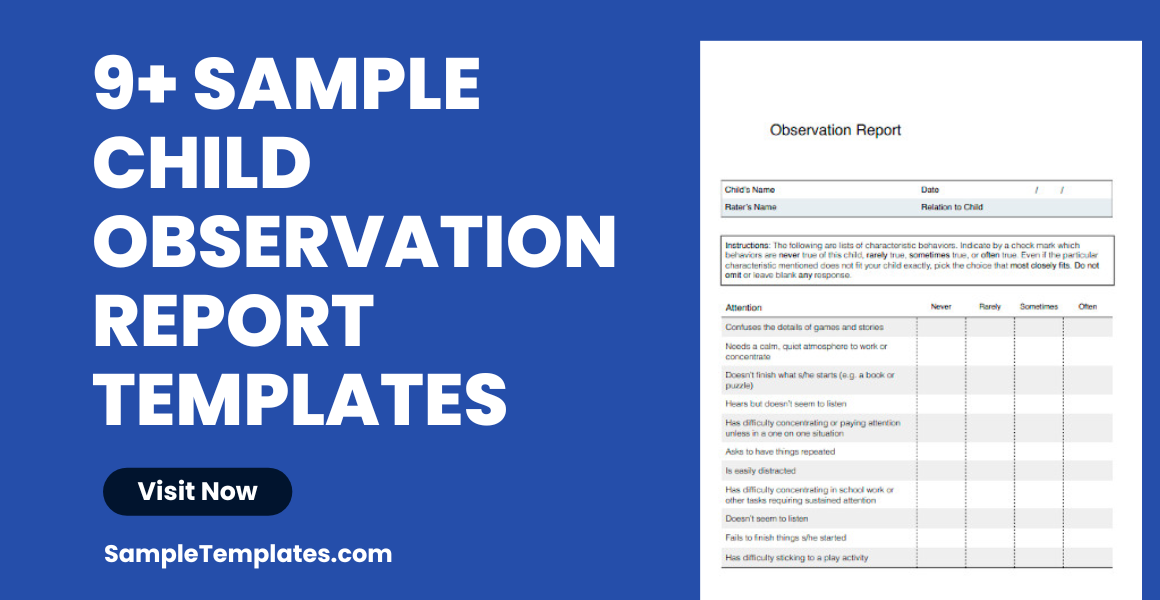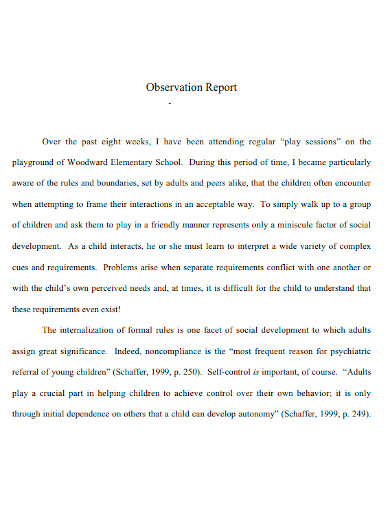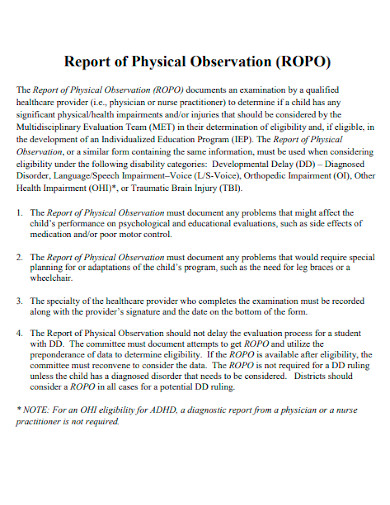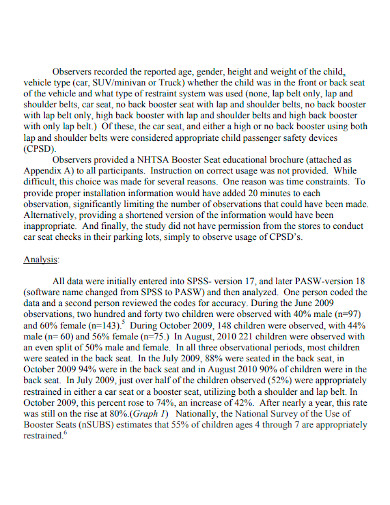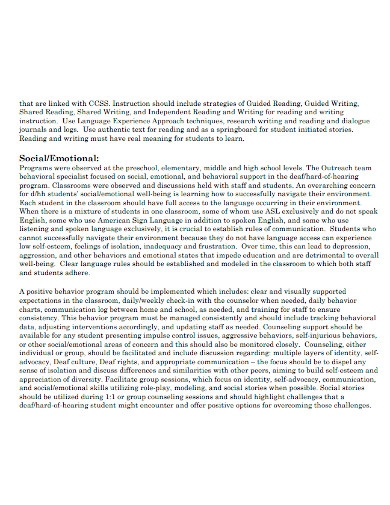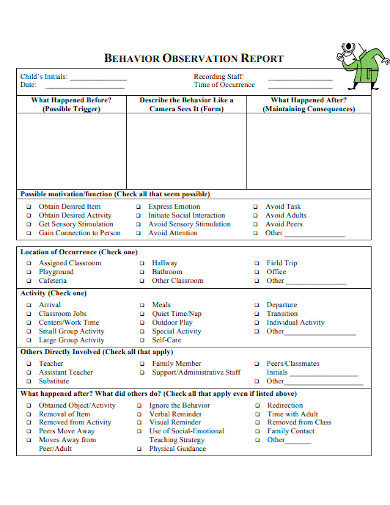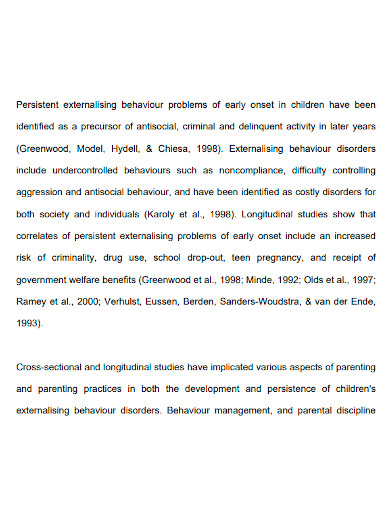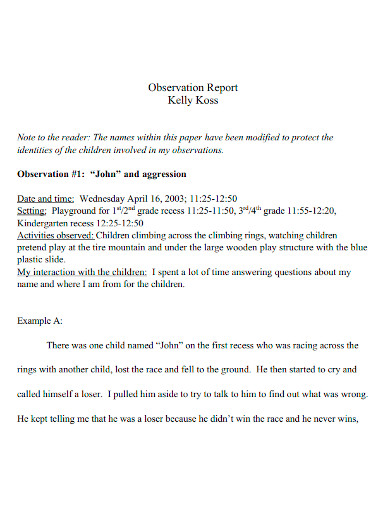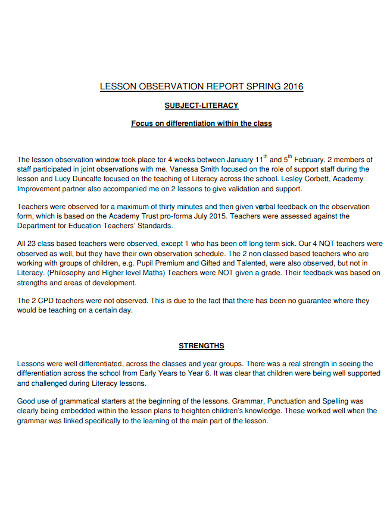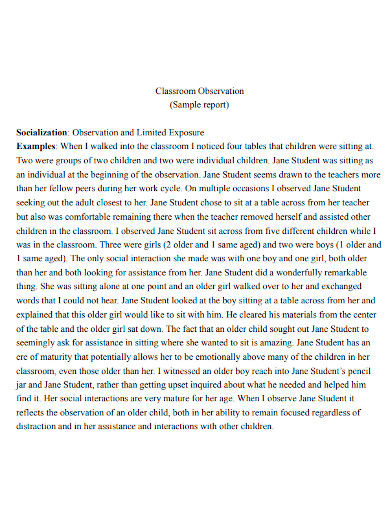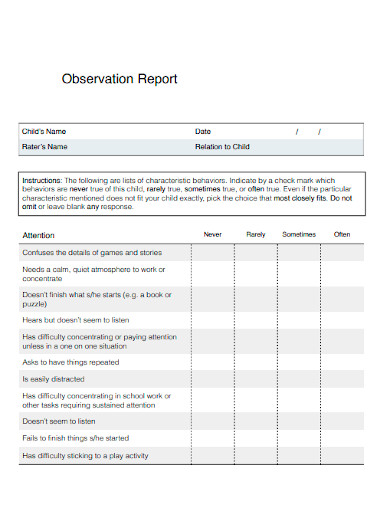A child observation report is a document that contains information about a child that can be used in the assessment and sample analysis of the child’s overall development. By conducting the observation, the development path of a child is predicted as well as his/her strengths, weaknesses, and other areas of improvement that can be worked on over time that can be detected through observation. The process of child observation starts with keenly watching and analyzing the behaviors of the child in known situations, taking notes of their reactions, and using all the data gathered into one comprehensive assessment report.
If you want to make your own child observation report but don’t know how to start, check out and download our free Child Observation Report Samples for school and other purposes.
9+ Child Observation Report Samples
1. Child Observation Report Template
2. Child Physical Observation Report Template
3. Simple Child Observation Report Template
4. Child School Observation Report Template
5. Sample Child Behavior Observation Report Template
6. Printable Child Observation Report Template
7. Child Observation Report Template
8. Sample Child Lesson Observation Report Template
9. Child Classroom Observation Report Template
10. Editable Child Observation Report Template
How to Write a Child Observation Report
The observation can start in any daily routine of the child at any place he/she might go such as doing classroom observation in which the child interacts with his/her peers, classmates, and teachers. Here are the basic steps of writing a child observation report.
1. Finding the right time and the right place
Before beginning the observation, the right place and the right time to do it should be considered. The setting will depend on the purpose of the data collection and what theory about the child’s behavior you are trying to prove. If the purpose of the observation is to take sample note of the child’s social interaction with his peers and you want to capture the negative and positive sides of his reactions. To help you with this, you can check our sample place setting templates to help you in preparing for the best arrangement where the child can interact well with his/her peers.
2. Make clear and relevant notes
Of course, simply observing what the child is doing is not effective as the possibility of forgetting some, if not all, the most important moments of the child’s behavior is big. Thus, taking clear and smart notes is very helpful to the observation process so that the child’s salient and determining behaviors are captured on paper for an immediate sample reference at a later time in a records management document. To help you in taking good and reliable notes, check out our free notes samples in google docs.
3. Gather the information together
After doing your observations and taking down notes, collect and arrange your data into sentences and paragraphs that make sense and have relevance to your goals. In order to do that, review your notes and make a situation analysis of what happened at a specific time frame and why the child exhibited certain behaviors. The gathered information will be turned into a narrative guided solely by the objectives of the test and evaluation.
4. Follow the appropriate format
How you write your final report should follow a specific format according to the type of observation you conducted and the available data you selected to include in your paper. Be clear with your observations that your readers will also be able to picture out the scenario in their minds so that they could also analyze and understand why the child gave such behavior and reaction. To do that, divide your ideas and arrange them in a sample timetable at which notable observations happen. You can also divide your observations according to what activities take place in chronological order. Also, while leading the readers to your deductions, it also helps them to understand more and make sense of the child’s responses if corresponding behavioral theories are injected into each narrated scenario.
FAQs
What does it mean by associative play?
It is an observational strategy implementation in which a child uses the same play materials as other children but each of them are not controlled in terms of behavioral responses and reactions.
What is a child’s unoccupied behavior?
The child decides not to be involved with the ongoing interaction with his peers. The child shows no to little interest in the activity initiated by the observers.
What does secure attachment mean?
When a child becomes disoriented and agitated when his/her parents depart out of sight. They can only be appeased if the parent is sent back to the place or when a trusted adult comes to comfort him/her.
Related Posts
FREE 9+ Medical Form Samples
FREE 8+ Behavior Analysis Samples
FREE 7+ Sample Temporary Custody Forms
FREE 6+ Sample Medical Consent Forms
FREE 26+ Sample Daily Reports
FREE 17+ Behavior Checklist Samples
FREE 11+ Child Support Termination Samples
FREE 10+ Sample Student Reports
FREE 9+ Sample Parent Teacher Conference Forms
FREE 63+ Incident Report Examples
FREE 47+ Report Format Samples
FREE 15+ Medical Authorization Forms
FREE 11+ Safety Audit Report Templates
FREE 10+ School Visit Report Samples
FREE 10+ Sample Psychological Reports
